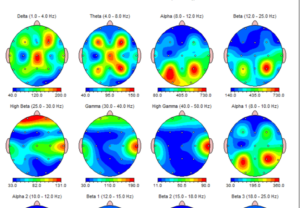Revealing the Secrets of the Mind Through qEEG Cerebral Mapping in Psychological Health Assessment
Revealing the Secrets of the Mind Through qEEG Cerebral Mapping in Psychological Health Assessment
Blog Article
Understanding the individual brain is a challenging endeavor, particularly when it pertains to mental health. Conventional approaches of evaluation often rely on interviews and questionnaires, which can occasionally overlook crucial details about how the brain operates. This is where qEEG electroencephalography, or qEEG, enters into the picture. qEEG is a specific method that measures electrical activity in the cerebrum. By examining these brainwaves, psychological health professionals can gain important understandings into a individual's mental condition, aiding to improve diagnosis and treatment.
qEEG functions by placing small sensors on the scalp to capture brain signals. These electrodes measure neural impulses produced by neurons, the cells in the cerebrum that interact with each other. The data gathered is then analyzed and presented as a set of patterns. Each type of brainwave—such as α, β, δ, and θ—corresponds to different psychological conditions and activities. For example, α waves are commonly associated with relaxation, while beta oscillations are associated to engaged thinking and problem-solving. By analyzing these patterns, clinicians can detect irregularities that may suggest psychological health issues.
One of the major benefits of qEEG is its ability to provide objective information. In contrast to conventional assessments that rely on personal accounts from clients, qEEG offers a distinct view of brain function. This clarity can help minimize prejudices in assessment and lead to more accurate intervention strategies. For example, if a patient is facing anxiety, qEEG can reveal specific patterns of neural function that are linked with stress conditions. This data allows mental health professionals to tailor interventions more efficiently, whether through therapy, medication, or other approaches.
Moreover, qEEG can be especially beneficial in tracking intervention progress. By conducting qEEG assessments at different points during treatment, clinicians can track changes in brain activity over time. This ongoing evaluation assists ascertain if a intervention is working or if modifications are needed. For instance, if a client is not reacting to a click for more specific medication, qEEG may indicate that their neural function has not changed in a manner that indicates improvement. This feedback loop can lead to more customized and effective mental health care.
In conclusion, qEEG brain mapping is a powerful tool in the field of psychological health evaluation. By offering unbiased information about neural function, it improves the understanding of various mental health conditions. This technique not only aids in accurate assessment but also assists in monitoring treatment effectiveness. As psychological health professionals continue to explore the potential of qEEG, it holds promise for improving the lives of individuals facing mental health issues. With continuous investigation and progress in techniques, the secrets of the brain may turn clearer, resulting to better outcomes for those in need of assistance.